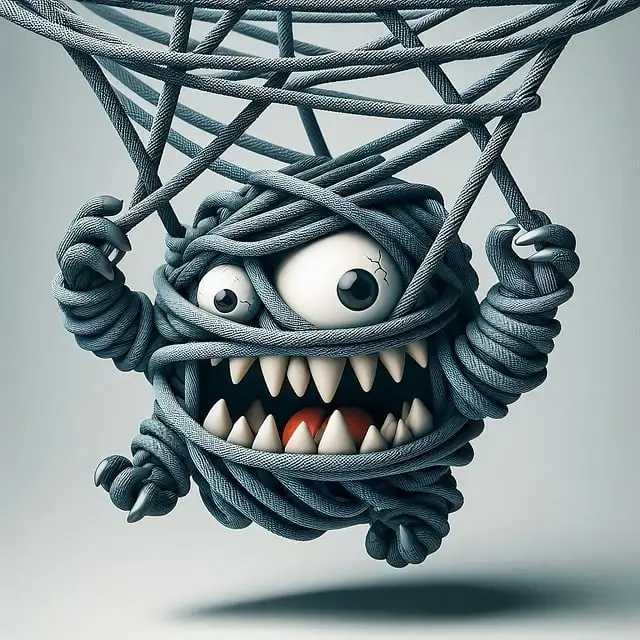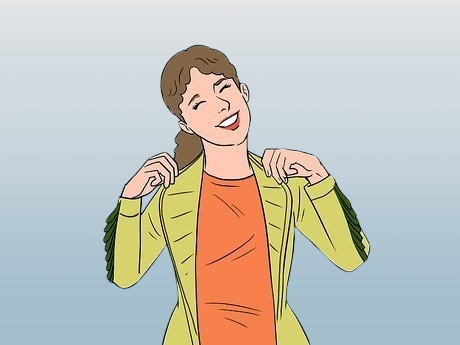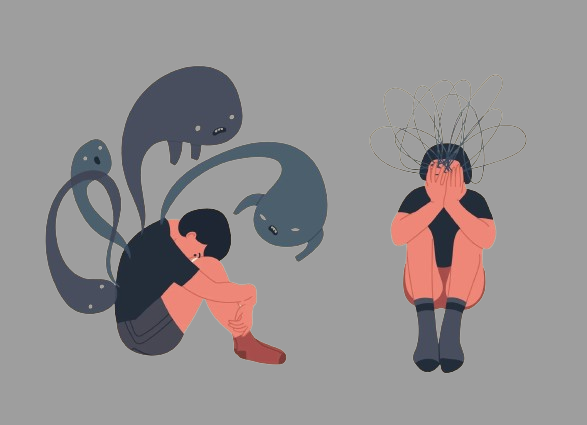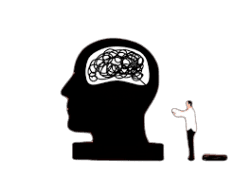Anxiety can lead to a range of issues in day-to-day living and can manifest as physical symptoms. Anxious people may experience stiff bodies and uncontrollably jerk or spasm their muscles as a result of excessive anxiety or stress. These are commonly referred to as anxiety twitches or, maybe more precisely, anxiety tics.
What is anxiety tics?
Anxiety attacks can cause jerky, uncontrollable movements and vocalizations known as anxiety tics. Although they can’t always be avoided, there are techniques to help: reduce tension, encourage relaxation, and focus on the good. An uncontrollable movement or vocalization, without a clear pattern or goal that can occur repeatedly or suddenly is called a tic. Vocal tics are those that include words or sounds, whereas motor tics are those that involve motor processes.

Individual tics can differ from one another. Though they can affect any part of the body, the face, neck, shoulders, arms, and hands are frequently affected.
Lip twitching, head jerking, and eye blinking are examples of common motor tics. Coordinated gestures may be a part of complex tics. Common vocal tics include coughing, grunting, and throat clearing. Some people may also repeat phrases or make inappropriate facial expressions.
Though they are frequently linked to neurological conditions such as Tourette syndrome (TS), tics can also arise for other causes. Anxiety or nervous tics are tics that only manifest while you’re experiencing anxiety.
Examples of Tics Related to Anxiety
Physical tics and vocal tics are the two primary categories into which anxiety-related tics can typically be divided. Every kind has different difficulties and traits that might have a big influence on a person’s day-to-day existence. Within each category, some typical instances of anxiety tics are included below.
Physical tics
Physical tics are characterized by abrupt, repetitive movements of particular muscle groups. Simple tics can happen suddenly and increase in frequency when anxiety is high. Typical instances include the following:
- blinking: twitching or fast blinking of the eyes
- Involuntary facial: emotions like frowning or raised eyebrows are known as facial grimacing.
- Jaw clenching: Involuntary contraction of the jaw muscles that can result in bruxism, or grinding of the teeth.
- jerking one’s head: Abrupt head motions such as nodding or swaying from side to side
- Finger tapping and snapping: tapping a surface repeatedly or snapping two fingers together.
- Shrugging of the shoulders: Intentionally raising the shoulders toward the ears repeatedly
Vocal tics

Uncontrollably made sounds from the mouth, throat, voice box, or nose are known as vocal tics. Simple verbal tics often get worse during periods of increased stress and anxiety, much like physical tics do. Examples of common vocal tics include:
- Coughing and clearing the throat: Chronic coughs unrelated to illnesses, frequent clearing of the throat when unnecessary
- Detecting: Sniffing repeatedly without any nasal congestion
- Grunting and humming: Uncontrollably produced vocal cord sounds, such as hums or grunts
- Echolalia: Echoing someone else’s words or phrases
How Much Time Do Tics last?
Most tics are classified as simple tics since they engage few muscles and last only a few seconds while occurring. On the other side, complex tics are longer-lasting and require more movements, including precise hand gestures or speaking aloud.
Experts concur that tics often begin at age five, however they can manifest as adults as well. Usually, they vanish within a year or so. For many, they disappear after adolescence or reappear periodically throughout life. However, some people’s nervous tics progress into long-term conditions.

We refer to nervous tic disorder that lasts less than a year as transient tic disorder. This develops into Chronic Motor or Vocal Tic Disorder if they last more than a year.
What causes anxiety disorder?
Any kind of tic can have a variety of causes, from physical discomfort to stress and emotional suffering.
Emotional anguish and stress
Stress is one of the main things that causes anxiety tics. The body may vocalize or involuntarily tense muscles in response to severe strain or emotional upheaval, offering a moment’s relief from overwhelming emotions. This reaction is a coping strategy meant to relax tension and provide momentary relief from intense feelings.
Imbalance in the nervous system
The emergence of anxiety tics may also be attributed to an imbalance in the neurological system. Anxiety tics can be brought on by an imbalance between the sympathetic and parasympathetic nervous systems, which can result in increased muscle tension and involuntary movements.
Genetics
In certain instances, tic disorders may arise as a result of genetic reasons. It’s crucial to understand that twitches caused by worry are not a real chronic tic disease. That being said, there may be a higher chance of anxiety tics in those who have family members with tic disorders or other mental health issues.
Elements related to lifestyle

Lifestyle choices may aggravate anxiety disorders, which may exacerbate tic behavior. The following are a few bad habits that could be causing your anxiety tics:
Poor sleep: When under a lot of stress, getting too little sleep might make you feel more anxious and more likely to get simple tics.
Caffeine intake: Due to its stimulating effects on the central nervous system, excessive caffeine consumption has been associated with an increase in anxious thoughts and actions, such as ticcing.
Substance abuse: Research indicates that some substances may both initiate and exacerbate tic disorders, suggesting that they may also be responsible for tics associated with anxiety.
How to deal with anxiety tics?
Although anxiety tics may be uncontrollable, they can be controlled with medication, therapy, and stress-reduction methods.

Try utilizing these techniques to manage anxiety tics in the moment:
- Distraction: Pay attention to anything else, like music, outside the tic and the source of your fear.
- Breathing techniques: Box breathing and other structured breathing techniques might help you relax and de-stress.
- Visualization: Shut your eyes and picture yourself in a tranquil, secure environment. Pay attention to the specifics.
- Affirmations: To calm nervous thoughts, tell yourself aloud things like “I am safe.”
- Moving: Change the direction of the energy in your body and mind by engaging in an active activity, such as taking a stroll.
A proactive approach to daily anxiety reduction, the development of positive habits, and the treatment of underlying physiological issues are frequently necessary for the prevention and long-term management of tics.
Alpha-adrenergic agonists and antipsychotics are two examples of medications that can assist control neurotransmitters in the brain. Psychotherapy frameworks assist reorganize maladaptive thought processes that fuel anxiety, change behavior, and enhance coping mechanisms.
Regular exercise and mindfulness meditation are examples of lifestyle practices that help reduce stress and can enhance the benefits of medicine and therapy.
Not everyone who experiences anxiety tics needs to see a doctor. Self-directed stress management and relaxation techniques may help you effectively manage tics.



